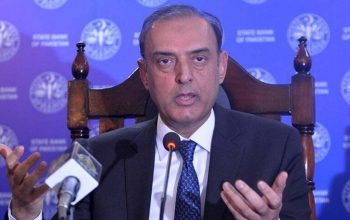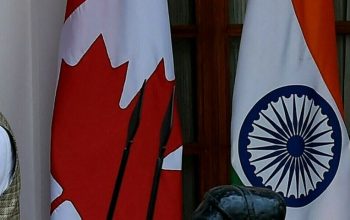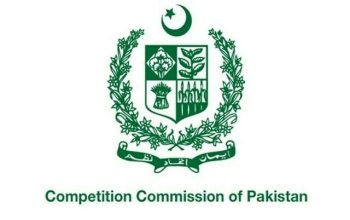Afghanistan somehow cannot be wished away, as it continues to cast its shadow on the region, and on Pakistan in particular. It has remained relevant historically as the Great Games of 18th, 19th and then the 20th centuries would testify. It has proven to be a graveyard of the empires. The Pashtun legend has it that leaving Afghans/Pashtuns alone is the best strategy which, paradoxically, is impossible to follow by the powers that be. Hence the continuous cycle of violence and instability. Highlanders all over the world and throughout history have remained suspicious of the ‘distant’ state authority and have traditionally defied it at will. Scottish highlanders and their Jacobite Rebellion of the 18th Century and Anglo-Afghan wars are just some cases in point.
The Afghan cemetery has buried Mongols, Persians, Turkic tribes including Uzbeks, Russians, American and the Europeans, etc. And Afghanistan continues to challenge the modern world. To paraphrase Churchill’s iteration about Russia…Afghanistan too is an enigma inside a riddle, wrapped in mystery. Those trying to handle this oldest and largest tribal society without the full backing of anthropology, sociology and contemporary politics — with a premium on inter and intra-tribal politics — do so at great peril. The fifty plus Coalition of the most powerful nations on earth, led by the sole superpower, found this truism in losses and embarrassment, after twenty years of dogged futility.
Whereas previous writings centred upon Pak-Afghan relations with TTP in sharp focus, this one would piece together Afghanistan’s contemporary international and regional relevance. We start with some ‘constants’ for policymakers to take note.
Geographically, Afghanistan connects Central and South Asia. Serving as pivot or qalb-e-Asia i.e. the heart of Asia, as Allama Iqbal saw it, the land-locked country sits on the knot formed by regional powers like Russia, China, India and the US (by design). Geostrategically, Afghanistan covers China’s western flank and its Uighur soft underbelly. To encircle the ‘Middle Kingdom’, America through a propped-up India would want to maintain presence on Afghan soil, physically or through proxies, as the Sino-US potential conflict is no longer spoken about in veiled speech and indirect references. The West is too brazenly open about it.
Besides its huge and untapped mineral resources, Afghanistan also has deposits of 17 chemically similar metallic elements or rare earth elements (REEs), used in semi-conductor and other advanced electronics. China dominates the global supply of REEs and would want to monopolise it. Copper from Aynak mines is just a snapshot. Afghanistan is also an energy corridor from Central/West to South Asia and from Iran to Pakistan.
India, far from having any strategic interest in Afghanistan, would maintain direct or indirect presence in the country to entangle Pakistan; check potential jihadist violence spilling over Indian soil; keep strategic listening post to eavesdrop on China, with whom it has a hot and cold conflict in Aksai Chin; and maintain India’s soft image. The US would want Indian involvement in Afghanistan to serve its own interests and would always prop up India against China. However, India is not likely to fall for the US entrapments, knowing full well the cost of potential conflict with China, with whom it has a bilateral trade of around a hundred billion dollars. The US, however, continues to hope against hope.
Russia, bruised and banished from Afghan scene fairly recently, and now embroiled in its European backyard with Ukraine, will continue to offer limited logistic, diplomatic and political intervention for Afghan pacification. Because an unstable Afghanistan upsets its extended soft underbelly in Central Asia…Tajikistan and Uzbekistan in particular.
Middle East meanwhile would play up its Islamist credentials in Afghanistan. And with Saudi-Iranian détente, the camp politics of Sunni Islam espoused by Saudi Arabia confronting the Shia Islam sponsored by Iranian clerics, in Central Afghanistan’s Hazarajat in particular, would ebb, if not totally diminish.
However, in all of the above cited chessboard positioning, Pakistan remains central to any corridor, any initiative, or any linkage, the way British India was central to Afghan monarchy and its people for centuries. Whether it was Deoband or later Darul Ullom Haqqania, or refuge for political opponents and disagreeing soldiers, or economic opportunities in Hindustan’s greener pastures, or distressed and hungry humanity migrating through the southern passes, Pakistan has been a conduit, a welcoming refuge and a safe haven for Afghan diaspora. Interestingly, the flow of people and goods south to north (towards Central Asia) never picked up any pace. Hospitals and universities in Peshawar, housing and business sectors in greater KP, and cricketing scene in Pakistan would not be complete without Afghans and Afghanistan. KP and Balochistan are conjoined twins with Kabul and Kandahar.
That spotlights Afghanistan-Pakistan and China linkage. With CPEC as BRI’s pilot project…not allowed to fail…China has twin stakes in Pak-Afghan bilateralism. Afghanistan provides strategic depth and stability for CPEC, and it is a potential candidate for an extended CPEC. China’s other interests, as cited above, complement and fortify this linkage. So, in simpler words, continued instability on Afghan soil affects Pakistan, complicating CPEC — the pilot project of China’s economic and geostrategic ambition. The New York Times publishes story after story making noise about China’s global ‘strategic strong points’ and ‘debt entrapment strategy’. No wonder the US ambassador recently visited Gwadar. The US Embassy Islamabad later released a short film about it.
So that is how the chessboard is aligned. For those in Pakistan fuming over Afghanistan’s bad behaviour on Durand Line, this might help. The Islamic Emirate is not schooled in diplomacy, governance and interstate relations. Their transitional set-up just emerged as intra-Afghan compromise from the ashes of war, turning a movement into a Militia, making soldiers into rulers. Its cadre has yet to know and obey an established civil-military chain of command that does not exist. Besides, TTP is complicating IEA’s outlook, bringing to the fore its lack of capacity and will (or both) to decisively engage TTP. All this when Da’esh is lurking in the background and Al-Qaeda is refusing to leave the foreground. It is not an envious situation for any government, let alone a hurriedly cobbled transitional government on life support.
Considering and equating IEA on a par with the Government of Pakistan would continue to engender hostility towards Afghans and Afghanistan. And continued hostility will squander our ‘strategic dividend’ as repeatedly argued.
Published in The Express Tribune, September 21st, 2023.
Like Opinion & Editorial on Facebook, follow @ETOpEd on Twitter to receive all updates on all our daily pieces.
Read the full story at the express tribune website.


